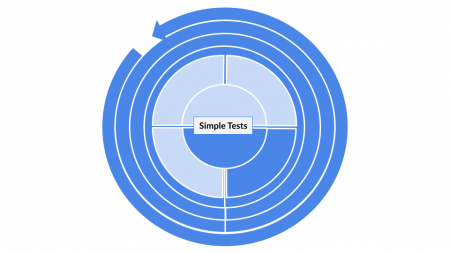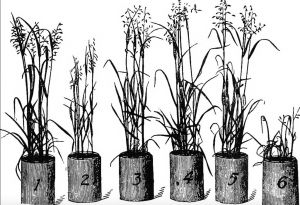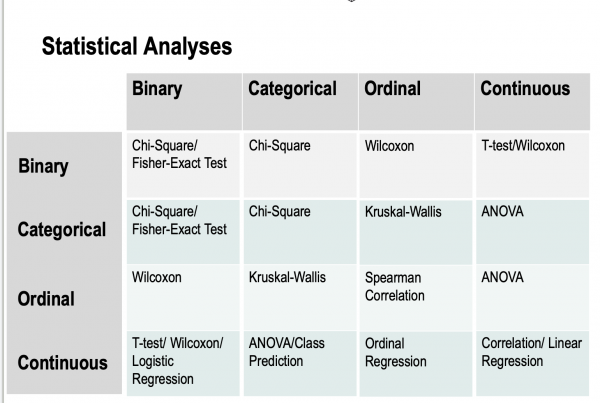| Method categorization | ||
|---|---|---|
| Quantitative | Qualitative | |
| Inductive | Deductive | |
| Individual | System | Global |
| Past | Present | Future |
In short: Simple statistical tests encapsule an array of simple statistical tests that are all built on probability, and no other validation criteria.
Contents
Background
Simple statistical tests statistics provide the baseline for advanced statistical thinking. While they are not so much used today within empirical analysis, simple tests are the foundation of modern statistics. The student t-test which originated around 100 years ago provided the crucial link from the more inductive thinking of Sir Francis Bacon towards the testing of hypotheses and the actual statistical testing of hypotheses. The formulation of the so-called null hypothesis is the first step within simple tests. Informed from theory this test calculates the probability whether the sample confirms the hypothesis or not. Null hypotheses are hence the assumptions we have about the world, and these assumptions can be confirmed or rejected.
| ExpandExpand here for an R example |
|---|
#---------------------------t-test---------------------------------------
#The t-test can be used on interval data or ratio data to test if two samples of a population differ significantly.
#Which is, that the samples have different means.
#H0 hypothesis: The two samples' means are not different.
#H1 hypothesis: The two samples' means are different.
#---------------------------analysis-------------------------------------
#We want to analyse the iris Dataset provided by R
iris <- iris
#Lets have a first look on the Data
head(iris)
str(iris)
summary(iris)
#The dataset gives the measurements in centimeters of the variables sepal length and width
#and petal length and width,
#respectively, for 50 flowers from each of 3 species of iris.
#The species are Iris setosa, versicolor, and virginica.
#lets split the dataset into 3 datasets for each species
versicolor <- subset(iris, Species == "versicolor")
virginica <- subset(iris, Species == "virginica")
setosa <- subset(iris, Species == "setosa")
#Now we can for example test, if the difference in petal length between versicolor and virginica is significant:
#H0 hypothesis: versicolor and virginica do not have different petal length
#H1 hypothesis: versicolor and virginica have different petal length
#Let's check, what the t-test says.
t.test(versicolor$Petal.Length,virginica$Petal.Length)
#the p-value is 2.2e-16, which is below 0.05 (it's almost 0).
#Therefore we neglect the H0 Hypothesis and adopt the H1 Hypothesis.
#--------------additional remarks on Welch's t-test----------------------
#The widely known Student's t-test requires equal variances of the samples.
#Let's check whether this is the case for our example from above by means of an f-test.
#If variances are unequal, we could use a Welch t-test instead, which is able to deal with unequal variances of samples.
var.test(versicolor$Petal.Length, virginica$Petal.Length)
#the resulting p-value is above 0.05 which means the variances of the samples are not different.
#Hence, this would justify the use of a Student's t-test.
#Interestingly, R uses the Welch t-test by default, because it can deal with differing variances. Accordingly, what we performed above is a Welch t-test.
#As we know that the variances of our samples do not differ significantly, we could use a Student's t-test.
#Therefore, we change the argument "var.equal" of the t-test command to "TRUE". R will use the Student's t-test now.
t.test(versicolor$Petal.Length,virginica$Petal.Length, var.equal = TRUE)
#In comparison to the above performed Welch t-test, the df changed a little bit, but the p-value is exactly the same.
#What a relief.
} Most relevant simple testsNote: Examples for how to implement these tests in R are shown in the section below. Expand below to see an R example. Collapse
This is the R example.
One sample t-testThe easiest example is the one sample t-test: it allows us to test a dataset (more specifically, its mean value) versus a specified value. For this purpose, the t-test gives you a p-value at the end. If the p-value is below 0.05, the sample differs significantly from the reference value. Example: Do the packages of your favourite cookie brand always contain as many cookies as stated on the outside of the box? Collect some of the packages, weigh the cookies contained therein and calculate the mean weight. Now, you can compare this value to the weight that is stated on the box using a one sample t-test. For more details on t-tests, please refer to the T-Test entry.
Two sample t-testTwo sample tests are the next step. These allow a comparison of two different datasets within an experiment. They tell you if the means of the two datasets differ significantly. If the p-value is below 0,05, the two datasets differ significantly. It is clear that the usefulness of this test widely depends on the number of samples - the more samples we have for each dataset, the more we can understand about the difference between the datasets. There is the Student’s t-test, which requires equal variances in the two groups; and the Welch T-test, which works with differing variances. To know whether the datasets have equal or varying variances, have a look at the F-Test. Example: The classic example would be to grow several plants and to add fertiliser to half of them. We can now compare the gross of the plants between the control samples without fertiliser and the samples that had fertiliser added. Plants with fertiliser (cm): 7.44 6.35 8.52 11.40 10.48 11.23 8.30 9.33 9.55 10.40 8.36 9.69 7.66 8.87 12.89 10.54 6.72 8.83 8.57 7.75 Plants without fertiliser (cm): 6.07 9.55 5.72 6.84 7.63 5.59 6.21 3.05 4.32 8.27 6.13 7.92 4.08 7.33 9.91 8.35 7.26 6.08 5.81 8.46 The result of the two-sample t-test is a p-value of 7.468e-05, which is close to zero and definitely below 0,05. Hence, the samples differ significantly and the fertilizer is likely to have an effect. For more details on t-tests, please refer to the T-Test entry.
Paired t-testPaired t-tests are the third type of simple statistics. These allow for a comparison of a sample before and after an intervention. Within such an experimental setup, specific individuals are compared before and after an event. This way, the influence of the event on the dataset can be evaluated. If the sample changes significantly, comparing start and end state, you will receive again a p-value below 0,05. Example: An easy example would be the behaviour of nesting birds. The range of birds outside of the breedig season dramatcally differs from the range when they are nesting. For more details on t-tests, please refer to the T-Test entry.
Chi-square Test of Stochastic IndependenceThe Chi Square test works for data that is only categorical. If you observe an event and measure two variables, you can use the Chi Square test to check if one variable influences the other one or if they occur independently from each other. Example: Do the children of parents with an academic degree visit more often a university? The H0 hypothesis would be: The variables are independent from each other. The H1 hypotheses would be: The variables influence each other. For example because children from better educated families have higher chances to achieve good results in school. For this example, the chi-quare test yields a p-value of 2.439e-07, which is close to zero. We can reject the null hypothesis H0 and assume that, based on our sample, the education of parents has an influence on the education of their children.
Wilcoxon TestThe next important test is the Wilcoxon rank sum test. This test is also a paired test. What is most relevant here is that not the real numbers are introduced into the calculation, but instead these numbers are transformed into ranks. In other words, you get rid of the question about normal distribution and instead reduce your real numbers to an order of numbers. This can come in handy when you have very skewed distribution - so a exceptionally non-normal distribution - or large gaps in your data. The test will tell you if the means of two samples differ significantly (i.e. p-value below 0,05) by using ranks. Example: An example would be the comparison in growths of young people compared to their size as adults. Imagine you have a sample where half of your people are professional basketball players then the real size of people would not make sense. Therefore, as a robust measure in modern statistics, rank tests were introduced.
f-test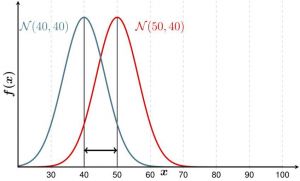
Figure No. 1 This figure shows two datasets which are normally distributed, but shifted. Source: snappy goat
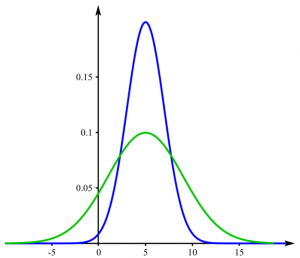
Figure No. 2 This figure shows two datasets with differing variances. Source: Wikimedia
The f-test allows you to compare the variance of two samples. Variance is calculated by taking the average of squared deviations from the mean and tells you the degree of spread in your data set. The more spread the data, the larger the variance is in relation to the mean. If the p-value of the f-test is lower than 0,05, the variances differ significantly. Example: If you examine players in a basketball and a hockey team, you would expect their heights to be different on average. But maybe the variance is not. Consider figure no. 1, where the mean is different, but the variance the same - this could be the case for your hockey and basketball team. In contrast, the height could be distributed as shown in figure no. 2. The f-test then would probably yield a p-value below 0,05.
An overview of simple tests and data formatsThe following table which we compiled shows which simple tests are useful depending on the data you have. To learn more about data formats, please refer to the entry on Data formats. Note: for combinations that lead to different methods (e.g. ordinal x continuous), please refer to all mentioned approaches.
R ExamplesTwo sample t-test#---------------------------t-test---------------------------------------
#The t-test can be used on interval data or ratio data to test if two samples of a population differ significantly.
#Which is, that the samples have different means.
#H0 hypothesis: The two samples' means are not different.
#H1 hypothesis: The two samples' means are different.
#---------------------------analysis-------------------------------------
#We want to analyse the iris Dataset provided by R
iris <- iris
#Lets have a first look on the Data
head(iris)
str(iris)
summary(iris)
#The dataset gives the measurements in centimeters of the variables sepal length and width
#and petal length and width,
#respectively, for 50 flowers from each of 3 species of iris.
#The species are Iris setosa, versicolor, and virginica.
#lets split the dataset into 3 datasets for each species
versicolor <- subset(iris, Species == "versicolor")
virginica <- subset(iris, Species == "virginica")
setosa <- subset(iris, Species == "setosa")
#Now we can for example test, if the difference in petal length between versicolor and virginica is significant:
#H0 hypothesis: versicolor and virginica do not have different petal length
#H1 hypothesis: versicolor and virginica have different petal length
#Let's check, what the t-test says.
t.test(versicolor$Petal.Length,virginica$Petal.Length)
#the p-value is 2.2e-16, which is below 0.05 (it's almost 0).
#Therefore we neglect the H0 Hypothesis and adopt the H1 Hypothesis.
#--------------additional remarks on Welch's t-test----------------------
#The widely known Student's t-test requires equal variances of the samples.
#Let's check whether this is the case for our example from above by means of an f-test.
#If variances are unequal, we could use a Welch t-test instead, which is able to deal with unequal variances of samples.
var.test(versicolor$Petal.Length, virginica$Petal.Length)
#the resulting p-value is above 0.05 which means the variances of the samples are not different.
#Hence, this would justify the use of a Student's t-test.
#Interestingly, R uses the Welch t-test by default, because it can deal with differing variances. Accordingly, what we performed above is a Welch t-test.
#As we know that the variances of our samples do not differ significantly, we could use a Student's t-test.
#Therefore, we change the argument "var.equal" of the t-test command to "TRUE". R will use the Student's t-test now.
t.test(versicolor$Petal.Length,virginica$Petal.Length, var.equal = TRUE)
#In comparison to the above performed Welch t-test, the df changed a little bit, but the p-value is exactly the same.
#What a relief.
Paired t-test# R Example for a Paired Samples T-Test
# Paired Samples - when we apply the 2 treatments to the same samples,
# giving us paired combinations of samples for the 2 treatments
# Assumptions for the Paired Sample T-Test:
# (1) Differences between paired values follow a Normal distribution
# (2) Data is Continuous
# (3) We have paired or dependent samples
# (4) Simple Random Sampling - each unit has an equal probability of being selected
# Setting up our Hypotheses (Two-Tailed):
# H0: The pairwise difference between means is 0 / Paired Population Means are equal
# H1: The pairwise difference between means is not 0 / Paired Population Means are not equal
# Example:
# Consider the supplement dataset to show the effect of 2 supplements on the time
#it takes for an athlete (in minutes) to finish a practice race
s1 <- c(10.9, 12.5, 11.4, 13.6, 12.2, 13.2, 10.6, 14.3, 10.4, 10.3)
s2 <- c(15.7, 16.6, 18.2, 15.2, 17.8, 20.0, 14.0, 18.7, 16.0, 17.3)
id <- c(1,2,3,4,5,6,7,8,9,10)
supplement <- data.frame(id,s1,s2)
supplement$difference <- supplement$s1 - supplement$s2
View(supplement)
# Exploring the data
summary(supplement)
str(supplement)
# Now, we can go for the Paired Samples T-Test
# We can define our Hypotheses as (Two-Tailed):
# H0: There is no significant difference in the mean time taken to finish the race
# for the 2 supplements
# H1: There is a significant difference in the mean time taken to finish the race
# for the 2 supplements
t.test(supplement$s1, supplement$s2, paired = TRUE)
# As the p-value is less than the level of significance (0.05), we have
# sufficient evidence to reject H0 and conclude that there is a significant
# difference in the mean time taken to finish the race with the 2 supplements
# Alternatively, if we wanted to check which supplement gives a better result,
# we could use a one tailed test by changing the alternate argument to less or greater
Chi-square Test#-------CHI-SQUARE TEST EXAMPLE-------
#We create a table in which two forests are differentiated according to their distribution of male, female and juvenile trees.
chi_sq<-as.table(rbind(c(16,20,19), c(23,12,10)))
dimnames(chi_sq)<- list(forest= c("ForestA","ForestB"), gender= c("male", "female", "juvenile"))
View(chi_sq)
#The question is, whether the abundance of trees in these forests is random (i.e. stochastically independent) or do the two variables (forest, gender) influence each other?
#For example, is it just coincedance that there are 23 male trees in forst B but only 16 in forest A?
#H0:there is no dependence between the variables
#H1:there is a dependency
chisq.test(chi_sq)
#Results of the Pearson's Chi-squared test
data: chi_sq
X-squared = 5.1005, df = 2, p-value = 0.07806
#p-value > 0.05 -> We cannot reject hypothesis H0.
#Thus, there is probably no dependency between the variables.
Wilcoxon Test#---------------------------Wilcoxon rank sum test-------------------------------------
#We want to analyse the iris Dataset provided by R
iris <- iris
#Lets have a first look on the Data
head(iris)
str(iris)
summary(iris)
#The dataset gives the measurements in centimeters of the variables sepal length and width
#and petal length and width,
#respectively, for 50 flowers from each of 3 species of iris.
#The species are Iris setosa, versicolor, and virginica.
#lets split the dataset into 3 datasets for each species
versicolor <- subset(iris, Species == "versicolor")
virginica <- subset(iris, Species == "virginica")
setosa <- subset(iris, Species == "setosa")
#Now we can for example test, if the difference in sepal length between setosa and virginica is significant:
#H0 hypothesis: The medians (distributions) of setosa and virginica are equal
#H1 hypothesis: The medians (distributions) of setosa and virginica differ
#test for normality
shapiro.test(setosa$Sepal.Length)
shapiro.test(virginica$Sepal.Length)
#both are normally distributed
#wilcoxon sum of ranks test
wilcox.test(setosa$Sepal.Length,virginica$Sepal.Length)
#the p-value is 2.2e-16, which is below 0.05 (it's almost 0).
#Therefore we neglect the H0 Hypothesis and adopt the H1 Hypothesis.
#Based on this result we may conclude the medians of these two distributions differ.
#The alternative hypothesis is stated as the “true location shift is not equal to 0”.
#That’s another way of saying “the distribution of one population is shifted to the left or
#right of the other,” which implies different medians.
f-test#To compare the variances of height of two fictive populations, we use an f-test. First, we create two vectors with the command 'rnorm'. Using rnorm, you can decide how many values your vector should contain, besides the mean and the standard deviation of the vector. To learn, what else you can do with rnorm, type:
?rnorm
#Creating two vectors
PopA=rnorm(40, mean=175, sd=1)
PopB=rnorm(40, mean=182, sd=2)
#Comparing them visually by creating histograms
hist(PopA)
hist(PopB)
#Conducting a f-test to compare the variances
var.test(PopA, PopB)
#And this is the result, telliing you that the two variances differ significantly
F test to compare two variances
data: PopA and PopB
F = 0.38584, num df = 39, denom df = 39, p-value = 0.00371
alternative hypothesis: true ratio of variances is not equal to 1
95 percent confidence interval:
0.2040711 0.7295171
sample estimates:
ratio of variances
0.3858411
Strengths & Challenges(more to be added soon) t-test
Wilcoxon TestChi-square Test of Stochastical Independencef-test
For more info on data distribution types, please refer to the entry on Data distribution.
NormativitySimple tests are not abundantly applied these days in scientific research, and often seem outdated. Much of the scientific designs and available datasets are more complicated, and many branches of sciences established more complex designs and a more nuanced view of the world. Consequently, simple tests grew kind of out of fashion. However, simple tests are not only robust, but sometimes still the most parsimonious approach. In addition, many simple tests are a basis for more complicated approaches, and initiated a deeper and more applied starting point for frequentist statistics. Simple tests are often the endpoint of many introductionary teachings on statistics, which is unfortunate. Overall, their lack in most of recent publications as well as wooden design frames of these approaches make these tests an undesirable starting point for many students, yet they are a vital stepping stone to more advanced models.
OutlookHopefully, one day school children will learn simple test, because they could, and the world would be all the better for it. If more people early on would learn about probability, and simple tests are a stepping stone on this long road, there would be an education deeper rooted in data and analysis, allowing for better choices and understanding of citizens.
Key Publications
References(1) Article on the "Student's t-test" on Wikipedia
Further LinksVideosThe Hypothesis Song: A little musical introduction to the topic Hypothesis Testing: An introduction of the Null and Alternative Hypothesis The Scientific Method: The musical way to remember it Popper's Falsification: The explanation why not all swans are white Type I & Type II Error: A quick explanation Validity: An introduction to the concept Reliability: A quick introduction The Confidence Interval: An explanation with vivid examples Choosing which statistical test to use: A very detailed videos with lots of examples One sample t-test: An example calculation Two sample t-test: An example calculation Introduction into z-test & t-test: A detailed video Chi-Square Test: Example calculations from the world of e-sports F test: An example calculation ArticlesHistory of the Hypothesis: A brief article through the history of science The James Lind Initiative: One of the earliest examples for building hypotheses The Scientific Method: A detailed and vivid article Falsification: An introduction to Critical Rationalism (German) Statistical Validity: An overview of all the different types of validity Reliability & Validity: An article on their relationship Statistical Reliability: A brief article Reliability Analysis: An overview about different approaches How reliable are the Social Sciences?: A short article by The New York Times Uncertainty, Error & Confidence: A very long & detailed article Student t-test: A detailed summary One sample t-test: A brief explanation Two sample t-test: A short introduction Paired test: A detailed summary Chi-Square Test: A vivid article Wilcoxon Rank Sum Test: A detailed example calculation in R F test: An example in R The authors of this entry are Henrik von Wehrden and Carlo Krügermeier. |
